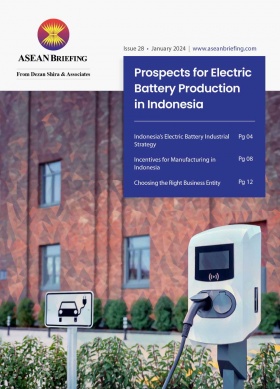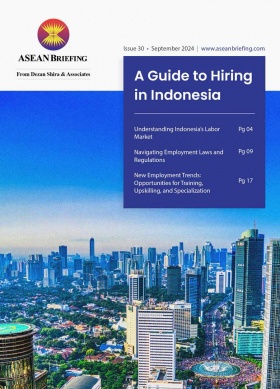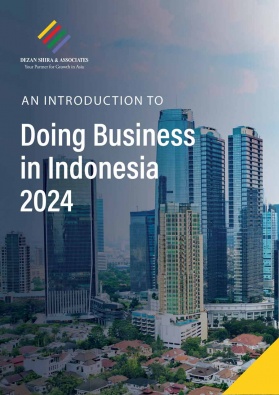Southeast Asia’s Balancing Act in a Second Trump Presidency
ASEAN is at a sensitive juncture as it faces the economic and geopolitical implications of a second Donald Trump presidency. Through strategic adaptation and regional cooperation, Southeast Asian markets can turn potential adversities into catalysts for growth, ensuring that the region not only withstands but thrives amid short-term global uncertainties and prepares for long-term resilience.
As Southeast Asia prepares for the return of Donald Trump to the White House, the region is at a crossroads facing significant economic and geopolitical shifts. Trump’s resurgence heralds the revival of his “America First” agenda, characterized by protectionist trade policies, reshored jobs, and a renegotiation of international alliances. For ASEAN (Association of Southeast Asian Nations) countries, this development brings both formidable challenges and unexpected opportunities, necessitating strategic recalibration to maintain economic stability and regional security amid an increasingly polarized global landscape.
Economic impact: The tariff threat
A cornerstone of Trump’s economic policy is the imposition of substantial tariffs aimed at reducing the U.S. trade deficit and protecting domestic industries. During his second term, Trump seeks to impose sweeping tariffs ranging from 10-20 percent on all imports, and up to 200 percent on electric vehicles, with a particularly aggressive stance against Chinese goods, proposing tariffs as high as 60 percent.
For Southeast Asia, this poses a significant threat. The region is heavily reliant on exports to the U.S., with countries like Vietnam, Malaysia, Thailand, and the Philippines serving as crucial suppliers of electronics, apparel, footwear, automotive parts, and raw materials. The blanket tariffs could disrupt these exports, leading to increased costs for American consumers and manufacturers who depend on these goods for their production lines. Vietnam, for instance, which is Southeast Asia’s largest exporter to the U.S., faces heightened economic risks. In 2019, under Trump’s first administration, Vietnam was labeled the world’s “worst abuser” of U.S. trade, leading to tense trade relations and the initiation of sanctions for alleged currency manipulation—a move later abandoned by the Biden administration.
The potential reimposition of such tariffs could result in a significant downturn for ASEAN economies. The advisory firm Oxford Economics estimates that Trump’s tariff policies could lead to a 3 percent decline in exports from Asia (excluding China), with poorer economies within Southeast Asia potentially experiencing steeper declines. Countries like Indonesia and Cambodia, which benefit less from diversified exports compared to Vietnam, might find themselves particularly vulnerable.
Navigating the GSP and trade preferences
The Generalized System of Preferences (GSP) has been a pivotal component of ASEAN’s trade strategy with the U.S. As noted by Lili Yan Ing (IEA Secretary General) and Yessi Vadila (Trade Specialist at ERIA), the GSP offered duty-free access to approximately 4,867 products (based on HS 6-digit tariff lines) in 2023 for eligible countries. This program has been instrumental in enhancing the competitiveness of ASEAN exports in the U.S. market, with countries like Indonesia, the Philippines, and Thailand reaping significant benefits. In 2023, ASEAN exports worth US$11.7 billion enjoyed GSP status, covering a broad array of goods from electrical parts to tires and organic chemicals.
However, Trump’s administration has historically shown a propensity to reassess and often curtail GSP benefits. During his first term, countries such as India and Turkey were removed from GSP eligibility due to trade imbalances and other economic concerns. If the second Trump administration opts to reevaluate and potentially reduce GSP access for ASEAN countries, the economic repercussions could be severe. Approximately 60 percent of ASEAN’s GSP-supported exports originate from Thailand and Indonesia, per Ing and Vadila, making these countries particularly susceptible to policy shifts. The removal or reduction of GSP benefits would not only make ASEAN exports less competitive but could also lead to increased production costs for U.S. firms reliant on these imports, thereby contributing to higher domestic prices and inflation within the United States.
The ASEAN nations may need to engage in vigorous diplomatic negotiations to retain or modify their GSP status. Building stronger bilateral ties with the U.S. and demonstrating the mutual benefits of maintaining preferential trade terms could be essential strategies. Additionally, ASEAN countries might explore expanding their product portfolios to include higher-value goods that are less susceptible to tariff increases, thereby maintaining their competitive edge in the U.S. market.
Supply chain shifts and foreign direct investment (FDI)
Trump’s economic strategy also emphasizes reshoring manufacturing and reducing reliance on foreign suppliers. This policy aims to bring manufacturing jobs back to the U.S., thereby boosting domestic production and decreasing dependency on international supply chains. For Southeast Asia, this presents both a challenge and an opportunity. On one hand, reshoring could reduce the demand for ASEAN’s manufacturing output, particularly in sectors like electronics, textiles, and automotive parts. This shift could lead to a decrease in production volumes, negatively impacting exports and economic growth in the region.
On the other hand, the “China Plus One” strategy—where companies maintain part of their operations in China while establishing additional bases in other countries—could benefit ASEAN nations. Countries like Vietnam, Malaysia, and Thailand are attractive alternatives due to their competitive labor costs, strategic geographic locations, and improving infrastructure. The first Trump administration saw a notable flight of investment away from China, with multinational corporations relocating production to these Southeast Asian hubs to hedge against U.S.-China trade tensions. A second Trump term could further accelerate this trend, potentially leading to increased FDI in ASEAN as companies seek to diversify their manufacturing bases.
A reverse case could also be made if we are to speculate.
In 2023, U.S. foreign direct investment (FDI) into ASEAN amounted to US$74.36 billion, making the United States the largest FDI source for the region, accounting for 32.35 percent of total inflows. In the decade between 2012 and 2021, the ASEAN region received almost US$346 billion in U.S. direct investment, with Singapore alone receiving US$295 billion. Should Trump’s policies incentivize American companies to reinvest domestically rather than abroad, ASEAN could see a decline in FDI from the U.S. This would particularly impact sectors reliant on American capital, technology, and expertise, such as finance, information and communication technology, and advanced manufacturing.
Additionally, ASEAN greenfield investments in key industries within targeted U.S. states could bolster trade and investment ties with a transactional Trump administration while supporting American job creation linked to exports destined for ASEAN markets.
More generally, ASEAN countries could enhance their appeal to foreign investors by continuing to improve their local business environments, investing in digital infrastructure, and fostering innovation-driven industries. By creating more attractive conditions for a diverse array of investors, ASEAN can ensure a steady flow of capital, technology, and expertise, even if U.S. investment declines.
Geopolitical dynamics and security concerns
Beyond economic implications, a second Trump presidency has profound geopolitical ramifications for Southeast Asia. The U.S.-China rivalry is intensifying, with Southeast Asian nations often finding themselves caught in the crossfire. Trump’s transactional foreign policy approach, which prioritizes national interests and economic gains over ideological alliances, may resonate with many ASEAN leaders who share a pragmatic stance toward international relations.
However, this alignment comes with significant security concerns. Countries like the Philippines, Malaysia, and Vietnam heavily depend on U.S. defense ties to counterbalance China’s growing economic and military prowess. The Philippines, in particular, has a long-standing Mutual Defense Treaty with the U.S. (with bilateral defense guidelines agreed to in 2023) and President Ferdinand Marcos Jr. has reiterated the importance of this alliance in maintaining regional stability. Trump’s unpredictable foreign policy could undermine these security partnerships, especially if his administration deprioritizes alliances in favor of bilateral deals that serve immediate economic interests.
The South China Sea remains a flashpoint, with China’s assertive territorial claims challenging the sovereignty of several ASEAN member states. A second Trump term could lead to heightened tensions in the region, as the U.S. might adopt a more confrontational stance towards China. This could result in increased military presence and exercises, potentially escalating conflicts and destabilizing the region. For instance, Malaysia and Vietnam, which have overlapping claims with China, may find their security strategies under strain if the U.S. shifts its focus away from maintaining a robust military presence in the Indo-Pacific.
To navigate these geopolitical challenges, ASEAN countries must adopt a nuanced approach to their foreign policies. Strengthening regional cooperation through forums like the ASEAN Regional Forum (ARF) and the East Asia Summit (EAS) can help build a collective security framework. Additionally, enhancing bilateral ties with other major powers, such as Japan, India, and Australia, can provide a more balanced security network, reducing the over-reliance on the U.S. while maintaining a degree of strategic autonomy.
Confronting the complex web of U.S.-China relations
Trump’s aggressive stance on China has catalyzed a regional reshuffling, with ASEAN nations acting as alternate destinations for companies divesting from China. As explained earlier, this China Plus One strategy has already begun to reshape the economic landscape of the Southeast Asian region. For example, Vietnam has emerged as a prime beneficiary, attracting significant investments from MNCs like Dell, Apple, Samsung, Nike, Adidas, Zara, and H&M, which have relocated or are considering relocating portions of their manufacturing operations from China—to combat rising costs and address U.S. market access risks.
However, this economic realignment also comes with increased geopolitical risks. As ASEAN countries deepen their economic ties with both the U.S. and China, they must carefully manage their relationships to avoid becoming entangled in superpower rivalries. The delicate balance of maintaining strong economic relations with China while leveraging U.S. investments and security ties requires adept diplomacy and strategic foresight.
Moreover, the intensification of U.S.-China tensions could lead to supply chain disruptions, as companies navigate between tariffs, trade barriers, and geopolitical considerations. For instance, the electronics and automotive industries, which are integral to ASEAN’s export economy, could face significant volatility as companies adjust their supply chains to mitigate risks associated with tariff hikes and political instability. ASEAN nations must therefore invest in building more resilient and diversified supply chains, reducing dependency on any single market or country.
ASEAN’s strategic responses: Key options
Diversification and regional cooperation
In the face of these multifaceted challenges, ASEAN must adopt a proactive and multifaceted strategy to safeguard its economic and geopolitical interests. Diversification of economic partnerships is paramount. By expanding trade relations beyond the U.S., ASEAN can mitigate the risks associated with potential U.S. protectionism. Strengthening economic ties with the European Union, Japan, South Korea, Taiwan, and the Middle East can provide alternative markets and investment sources, reducing dependency on the U.S. and China.
Enhancing intra-ASEAN trade is another critical strategy. The ASEAN Economic Community (AEC) aims to create a single market and production base, facilitating the free flow of goods, services, investments, and skilled labor across member states. By deepening regional integration, ASEAN can bolster its economic resilience, ensuring that disruptions in one member country do not significantly impact the entire region. Initiatives like the Regional Comprehensive Economic Partnership (RCEP), which includes major economies like China, Japan, and South Korea, offer further avenues for economic cooperation and integration.
Furthermore, ASEAN must focus on strengthening its business environment to attract a diverse range of foreign investments. Improving regulatory frameworks, investing in digital infrastructure, and fostering innovation-driven industries can enhance the region’s attractiveness to global investors. By creating a more conducive environment for business and innovation, ASEAN can attract investments from a broader spectrum of countries, reducing reliance on any single economic bloc.
Leveraging technology and sustainable development
As global trade dynamics evolve and the Trump administration pulls away from U.S. climate action goals, ASEAN has an opportunity to leverage technology and sustainable development to enhance its global competitive edge. Investing in advanced manufacturing technologies, digitalization, and green industries can position ASEAN countries as leaders in next-generation industries. For instance, developing robust digital infrastructure and fostering a skilled workforce in technology sectors can attract high-tech investments and drive economic growth.
Sustainability is another area where ASEAN can differentiate itself. Embracing renewable energy, sustainable agriculture, and environmentally friendly manufacturing practices can not only attract environmentally conscious investors but also ensure long-term economic resilience. By prioritizing sustainable development, ASEAN can address both economic and environmental challenges, creating a more stable and prosperous future for the region.
Enhancing diplomatic agility
Diplomatically, ASEAN must exhibit agility and strategic foresight in navigating U.S.-China rivalries. Building stronger multilateral institutions and fostering regional solidarity can provide a united front in negotiations with major powers. ASEAN can also engage in active diplomacy with the U.S. and China, seeking to maintain constructive relationships while safeguarding its interests.
Opportunities amid challenges
While Donald Trump’s return to the U.S. presidency introduces significant economic and geopolitical challenges for Southeast Asia, it also presents opportunities for strategic growth and resilience. Heightened tariffs, potential GSP suspensions, and shifts in FDI flows necessitate proactive measures to diversify economic partnerships, strengthen regional cooperation, and enhance the business environment. By leveraging technology, embracing sustainable development, and demonstrating diplomatic agility, ASEAN can transform potential setbacks into avenues for growth and regional strength.
Ultimately, Southeast Asia’s ability to adapt and innovate in the face of shifting global dynamics will determine its success in turning the challenges of an “America First” agenda into a new era of resilience and long-term economic transformation.
Key takeaways
- Economic vulnerabilities and opportunities: Southeast Asia must brace for potential tariffs and shifts in trade dynamics, particularly affecting major exporters like Vietnam and Thailand. However, opportunities arise for countries to attract investments as companies diversify away from China.
- Trade preferences at risk: The potential reevaluation of the Generalized System of Preferences could impact ASEAN’s competitiveness in the U.S. market, necessitating diplomatic efforts to retain favorable trade terms.
- Supply chain shifts: While reshoring policies may reduce demand for ASEAN’s manufacturing output, the “China Plus One” strategy offers a pathway for continued investment and economic diversification.
- FDI declines and diversification: A second Trump term could lead to a decline in U.S. foreign direct investment, prompting ASEAN to seek alternative sources of capital and strengthen regional economic ties with Middle East and European markets.
- Geopolitical balancing act: ASEAN must navigate the intensifying U.S.-China rivalry with strategic diplomacy, enhancing regional cooperation and forging balanced relationships with multiple global powers.
- Strategic responses: Diversifying economic partnerships, enhancing intra-ASEAN trade, investing in technology and sustainability, and demonstrating diplomatic agility are crucial strategies for ASEAN’s resilience.
About Us
ASEAN Briefing is one of five regional publications under the Asia Briefing brand. It is supported by Dezan Shira & Associates, a pan-Asia, multi-disciplinary professional services firm that assists foreign investors throughout Asia, including through offices in Jakarta, Indonesia; Singapore; Hanoi, Ho Chi Minh City, and Da Nang in Vietnam; besides our practices in China, Hong Kong SAR, India, Italy, Germany, and USA. We also have partner firms in Malaysia, Bangladesh, the Philippines, Thailand, and Australia.
Please contact us at asean@dezshira.com or visit our website at www.dezshira.com and for a complimentary subscription to ASEAN Briefing’s content products, please click here.
- Previous Article Philippines Refines Tax Policies with CREATE MORE Act
- Next Article Singapore’s CPF Special Account Closure: What to Expect in 2025








